Top Ten Worst Things for a Dog to Chase
The Top Ten
1 Nuclear Missile
I just can't imagine this. It would not be pleasant.
2 Train
It's nerve-chilling when this happens!
3 Alligator
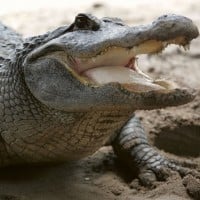 An alligator is a crocodilian in the genus Alligator of the family Alligatoridae. The two living species are the American alligator and the Chinese alligator. Additionally, several extinct species of alligator are known from fossil remains. Alligators have long existed since the Oligocene epoch 37 million years ago.
An alligator is a crocodilian in the genus Alligator of the family Alligatoridae. The two living species are the American alligator and the Chinese alligator. Additionally, several extinct species of alligator are known from fossil remains. Alligators have long existed since the Oligocene epoch 37 million years ago.
 An alligator is a crocodilian in the genus Alligator of the family Alligatoridae. The two living species are the American alligator and the Chinese alligator. Additionally, several extinct species of alligator are known from fossil remains. Alligators have long existed since the Oligocene epoch 37 million years ago.
An alligator is a crocodilian in the genus Alligator of the family Alligatoridae. The two living species are the American alligator and the Chinese alligator. Additionally, several extinct species of alligator are known from fossil remains. Alligators have long existed since the Oligocene epoch 37 million years ago. Alligators are tough. Don't chase them!
4 Snake
5 Bullet
It would need quite some chasing, and probably won't end well.
6 You
A dog almost bit my leg off once... Good thing I'm the fastest Indian in my school
I almost got killed
7 Boomerang
That dog wouldn't be chasing it for very long...
8 Stick of Dynamite
9 Skydiver
10 Skunk
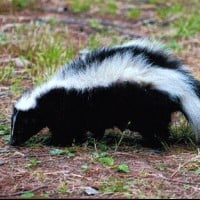 Skunks are mammals known for their ability to spray a liquid with a strong odor. Different species of skunk vary in appearance from black-and-white to brown or cream colored, but all have warning coloration.
Skunks are mammals known for their ability to spray a liquid with a strong odor. Different species of skunk vary in appearance from black-and-white to brown or cream colored, but all have warning coloration.
 Skunks are mammals known for their ability to spray a liquid with a strong odor. Different species of skunk vary in appearance from black-and-white to brown or cream colored, but all have warning coloration.
Skunks are mammals known for their ability to spray a liquid with a strong odor. Different species of skunk vary in appearance from black-and-white to brown or cream colored, but all have warning coloration. My cat got sprayed by a skunk this summer, and believe me it wasn't pretty. We assume she got sprayed by chasing after one so I doubt it would end any better for dogs!
The Contenders
11 Plane
12 Boat
The dog would likely go miles off the coast. I probably wouldn't be willing to get it.
13 Eagle
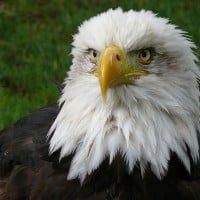 Eagle is the common name for many large birds of prey of the family Accipitridae. Eagles belong to several groups of genera, some of which are closely related. Most of the 60 species of eagle are from Eurasia and Africa. Outside this area, just 14 species can be found - 2 in North America, 9 in Central ...read more.
Eagle is the common name for many large birds of prey of the family Accipitridae. Eagles belong to several groups of genera, some of which are closely related. Most of the 60 species of eagle are from Eurasia and Africa. Outside this area, just 14 species can be found - 2 in North America, 9 in Central ...read more.
 Eagle is the common name for many large birds of prey of the family Accipitridae. Eagles belong to several groups of genera, some of which are closely related. Most of the 60 species of eagle are from Eurasia and Africa. Outside this area, just 14 species can be found - 2 in North America, 9 in Central ...read more.
Eagle is the common name for many large birds of prey of the family Accipitridae. Eagles belong to several groups of genera, some of which are closely related. Most of the 60 species of eagle are from Eurasia and Africa. Outside this area, just 14 species can be found - 2 in North America, 9 in Central ...read more.
14 Dog
Or for that matter, the other way around. Like an Affenpinscher chasing a Great Dane.
15 Car
16 Bear
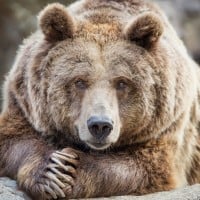 Bears are carnivoran mammals of the family Ursidae. They are classified as caniforms, or doglike carnivorans. Although only eight species of bears are extant, they are widespread, appearing in a wide variety of habitats throughout the Northern Hemisphere and partially in the Southern Hemisphere. Bears ...read more.
Bears are carnivoran mammals of the family Ursidae. They are classified as caniforms, or doglike carnivorans. Although only eight species of bears are extant, they are widespread, appearing in a wide variety of habitats throughout the Northern Hemisphere and partially in the Southern Hemisphere. Bears ...read more.
 Bears are carnivoran mammals of the family Ursidae. They are classified as caniforms, or doglike carnivorans. Although only eight species of bears are extant, they are widespread, appearing in a wide variety of habitats throughout the Northern Hemisphere and partially in the Southern Hemisphere. Bears ...read more.
Bears are carnivoran mammals of the family Ursidae. They are classified as caniforms, or doglike carnivorans. Although only eight species of bears are extant, they are widespread, appearing in a wide variety of habitats throughout the Northern Hemisphere and partially in the Southern Hemisphere. Bears ...read more.
17 Tornado
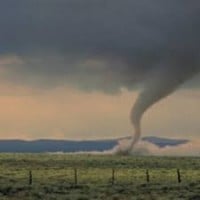

18 Coyote
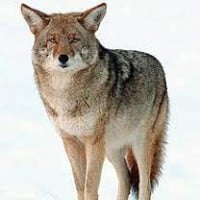 Coyotes are canines native to North and Central America. They are highly adaptable and can thrive in a variety of environments, from forests and grasslands to urban areas. Coyotes have a similar appearance to domestic dogs but are typically smaller in size, with a bushy tail, erect ears, and a pointed muzzle. They are opportunistic omnivores, feeding on a diverse diet that includes small mammals, birds, insects, and even plants. Known for their vocalizations, coyotes communicate using a range of howls, barks, and yips. They play a crucial role in ecosystems by controlling populations of rodents and other small animals.
Coyotes are canines native to North and Central America. They are highly adaptable and can thrive in a variety of environments, from forests and grasslands to urban areas. Coyotes have a similar appearance to domestic dogs but are typically smaller in size, with a bushy tail, erect ears, and a pointed muzzle. They are opportunistic omnivores, feeding on a diverse diet that includes small mammals, birds, insects, and even plants. Known for their vocalizations, coyotes communicate using a range of howls, barks, and yips. They play a crucial role in ecosystems by controlling populations of rodents and other small animals.
 Coyotes are canines native to North and Central America. They are highly adaptable and can thrive in a variety of environments, from forests and grasslands to urban areas. Coyotes have a similar appearance to domestic dogs but are typically smaller in size, with a bushy tail, erect ears, and a pointed muzzle. They are opportunistic omnivores, feeding on a diverse diet that includes small mammals, birds, insects, and even plants. Known for their vocalizations, coyotes communicate using a range of howls, barks, and yips. They play a crucial role in ecosystems by controlling populations of rodents and other small animals.
Coyotes are canines native to North and Central America. They are highly adaptable and can thrive in a variety of environments, from forests and grasslands to urban areas. Coyotes have a similar appearance to domestic dogs but are typically smaller in size, with a bushy tail, erect ears, and a pointed muzzle. They are opportunistic omnivores, feeding on a diverse diet that includes small mammals, birds, insects, and even plants. Known for their vocalizations, coyotes communicate using a range of howls, barks, and yips. They play a crucial role in ecosystems by controlling populations of rodents and other small animals.
19 Wolf
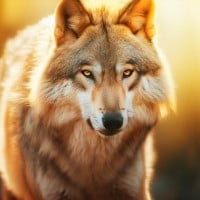 The wolf (Canis lupus), also known as the gray or grey wolf, is a large canine native to Eurasia and North America. Over thirty subspecies of Canis lupus have been recognized, with gray wolves comprising the wild subspecies. As the largest extant member of the Canidae family, the wolf is distinguished... read more
The wolf (Canis lupus), also known as the gray or grey wolf, is a large canine native to Eurasia and North America. Over thirty subspecies of Canis lupus have been recognized, with gray wolves comprising the wild subspecies. As the largest extant member of the Canidae family, the wolf is distinguished... read more
 The wolf (Canis lupus), also known as the gray or grey wolf, is a large canine native to Eurasia and North America. Over thirty subspecies of Canis lupus have been recognized, with gray wolves comprising the wild subspecies. As the largest extant member of the Canidae family, the wolf is distinguished... read more
The wolf (Canis lupus), also known as the gray or grey wolf, is a large canine native to Eurasia and North America. Over thirty subspecies of Canis lupus have been recognized, with gray wolves comprising the wild subspecies. As the largest extant member of the Canidae family, the wolf is distinguished... read moreBAdd New Item